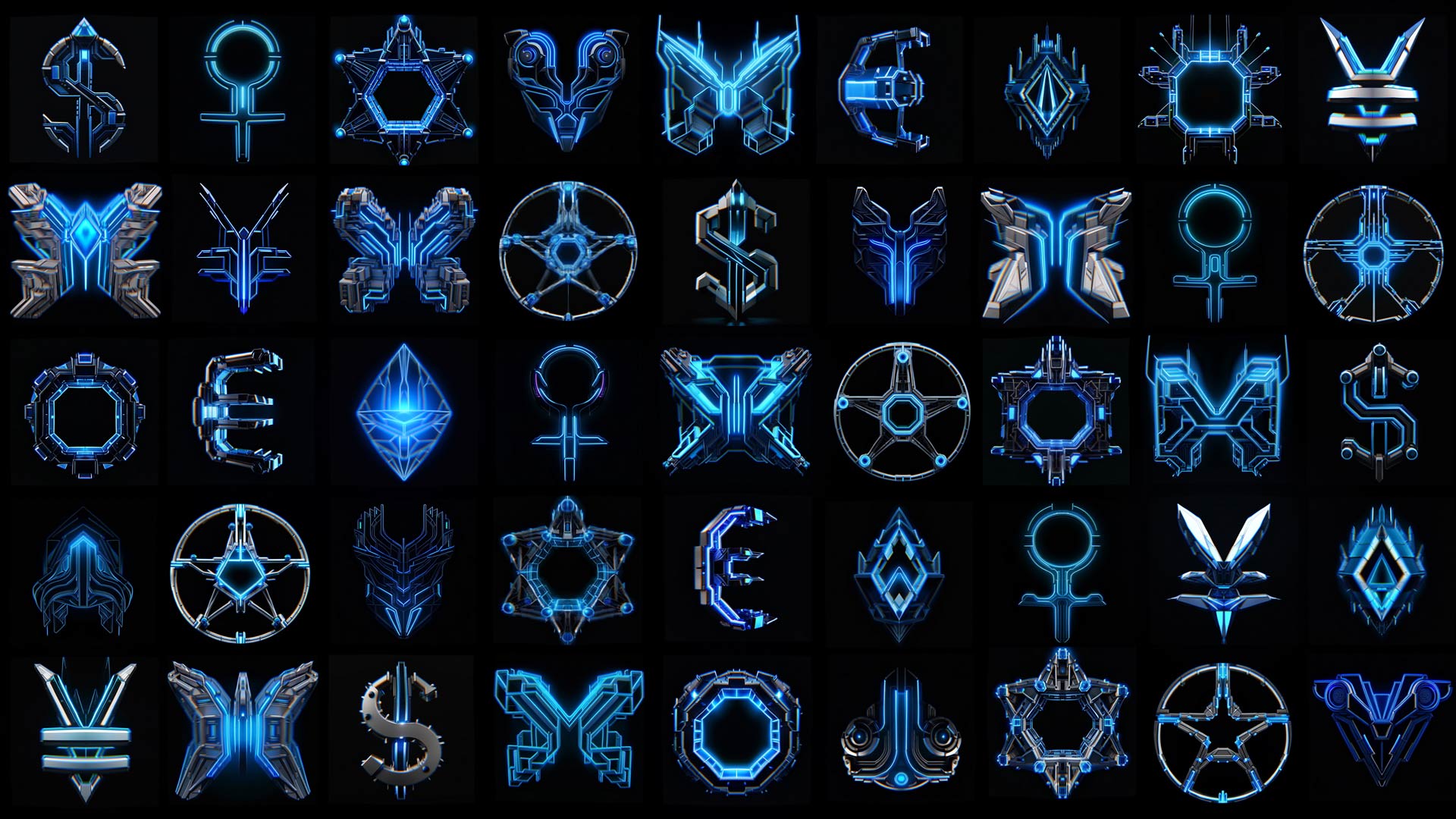In a world teeming with an array of vibrant cultures and diverse nationalities, one fascinating way to celebrate this diversity is through the exploration of national symbols. These symbols, deeply rooted in the history and identity of a nation, offer a unique insight into the culture, values, and traditions of its people. As we delve deeper into the digital age, these national symbols have found a new platform to shine – motion backgrounds. This article will explore the rich tapestry of global cultures through the lens of national symbols depicted in motion backgrounds. We will discuss the significance of understanding cultural diversity through these symbols, their role in reflecting cultural identity, the art of integrating them into motion backgrounds, and their role in promoting cultural diversity. Join us on this captivating journey as we traverse the world, one symbol at a time.
- 1. “Understanding Cultural Diversity Through National Symbols”
- 2. “National Symbols as Reflections of Cultural Identity”
- 3. “The Art of Integrating National Symbols into Motion Backgrounds”
- 4. “Exploring Global Cultures: A Review of Motion Backgrounds”
- 5. “The Role of National Symbols in Promoting Cultural Diversity”
1. “Understanding Cultural Diversity Through National Symbols”
Understanding cultural diversity through national symbols is a fascinating journey into the heart of a country’s identity and heritage. National symbols, often depicted in motion backgrounds, serve as a visual representation of a nation’s history, culture, values, and aspirations. They are significant tools for communication, fostering national unity and identity, promoting cultural understanding, and enhancing social cohesion.
National symbols can represent a wide variety of elements, including animals, plants, colors, patterns, landmarks, and historical figures, among others. For instance, the bald eagle and the Stars and Stripes are widely recognized symbols of the United States, embodying freedom and democracy. The cherry blossom, or Sakura, is an emblem of Japan, symbolizing transient beauty, while the Eiffel Tower is an iconic symbol of France, representing innovation and progress.
When these symbols are incorporated into motion backgrounds, such as in films, animations, and digital media, they come alive and create a dynamic, immersive experience for the viewer. This visual storytelling can enhance our understanding and appreciation of cultural diversity. It encourages us to learn about different cultures, fostering mutual respect and promoting intercultural dialogue.
However, it is important to handle these symbols with respect and sensitivity, as they are deeply ingrained in the cultural fabric of a nation. Misinterpretation or misuse can lead to cultural misunderstanding or even offend people. Therefore, it is crucial to research and understand the cultural context and significance of these symbols before using them.
In conclusion, understanding cultural diversity through national symbols offers a unique and insightful perspective into the rich tapestry of world cultures. Through these symbols, we can embark on a journey of discovery, gaining a deeper appreciation of the diversity and interconnectedness of our global community.
2. “National Symbols as Reflections of Cultural Identity”
National symbols serve as potent reflections of a country’s cultural identity. They embody the shared values, traditions, and historical narratives of a nation, fostering a sense of belonging among its citizens. They are not just emblems or icons, but they are the visual embodiment of the nation’s soul, a collective expression of its people and their unique cultural matrix.
For instance, the Bald Eagle symbolizes the United States’ strength and freedom. The Maple Leaf stands for the unity and tranquility of Canada. The Cherry Blossom, revered in Japan, represents the fragility and beauty of life. These symbols capture the essence of the country they represent, highlighting its unique cultural nuances and traditions.
National symbols are also used to foster a sense of national pride and unity. They become rallying points during national celebrations and events, serving as a reminder of shared history and common goals. They can be seen on national flags, currency, and other state representations, constantly reinforcing the national identity.
In the context of motion backgrounds, national symbols can be brought to life in a dynamic and engaging way. Through the use of animation and motion graphics, these symbols can be presented in new and innovative forms, providing a fresh perspective on traditional cultural icons. This not only adds to the aesthetic appeal but also enhances the emotional resonance of these symbols, making them more relatable to the modern audience.
Moreover, national symbols in motion backgrounds can transcend language barriers, enabling people from different linguistic backgrounds to connect with the culture being represented. They serve as visual narratives, telling stories about the nation’s past, present, and aspirations for the future.
In conclusion, national symbols play a pivotal role in reflecting and reinforcing a nation’s cultural identity. Whether static or in motion, they serve as a visual language that encapsulates the collective memory, values, and aspirations of a people, promoting mutual understanding and respect for cultural diversity.
3. “The Art of Integrating National Symbols into Motion Backgrounds”
Integrating national symbols into motion backgrounds is an intricate art form that requires creativity, technical skills, and a deep understanding of the symbols’ meanings and cultural significance. This fusion of technology and culture results in a unique visual experience that celebrates diversity and promotes understanding between different cultures.
The first step in the integration process is selecting the appropriate national symbol. The symbol must be culturally significant and easily recognizable. It could be anything from national flags, animals, landmarks, or cultural artifacts. The chosen symbol must accurately represent a particular culture or nation and should be treated with the utmost respect and sensitivity, given its cultural significance.
Once the symbol has been selected, the next step is to incorporate it into a motion background. There are numerous ways to do this, and the method chosen will largely depend on the symbol itself and the message you wish to convey. For instance, a national symbol can be used as the central figure in the motion background, or it could be subtly woven into the fabric of the animation, appearing and disappearing as the background moves and shifts. The use of colors is also important, as they can evoke specific emotions and associations related to the symbol.
The integration of national symbols into motion backgrounds is not just about creating visually appealing images. It’s also about telling a story and promoting cultural understanding. By incorporating these symbols, motion backgrounds can serve as a powerful tool for cultural exchange, allowing viewers from different backgrounds to learn about and appreciate the richness and diversity of other cultures.
Furthermore, the use of these symbols in motion backgrounds can help foster a sense of national pride and identity. It can serve as a reminder of a nation’s history, values, and traditions. In a world where globalization is increasingly homogenizing cultures, these motion backgrounds can serve as a powerful tool in preserving cultural identity.
In conclusion, the art of integrating national symbols into motion backgrounds is a delicate balance of creativity, technical skills, and cultural sensitivity. Done correctly, it can result in a unique form of art that not only looks stunning but also promotes cultural diversity and understanding.
4. “Exploring Global Cultures: A Review of Motion Backgrounds”
Motion backgrounds are dynamic, immersive ways of creating an aesthetic environment that can reflect various themes, including the celebration of cultural diversity. By incorporating national symbols within motion backgrounds, we open up a new avenue for exploring global cultures. This multimedia art form allows individuals to engage with different cultures in a unique and immersive way.
When we talk about national symbols, we’re referencing the objects, emblems, or motifs that represent a country or nation’s cultural identity. Examples could range from the bald eagle of the United States, the maple leaf of Canada, the cherry blossoms of Japan, or the lotus of India. When these symbols are artistically incorporated into motion backgrounds, they can provide a visual representation of the country’s culture and heritage.
Motion backgrounds offer a unique way to explore these symbols. They are not static; they incorporate movement, color, and sometimes sound, creating a dynamic experience that can evoke a more profound understanding and appreciation of the culture. The use of animation and digital artistry can bring these symbols to life, portraying them in ways that are both visually stunning and culturally respectful.
Incorporating national symbols into motion backgrounds is also a way of promoting cultural diversity. It allows for the representation of a broad spectrum of cultures on a global platform. These multimedia presentations can be used in various settings, from educational platforms teaching about different cultures to corporate environments looking to celebrate diversity.
Moreover, the use of motion backgrounds provides an opportunity for cultural exchange. It gives individuals from different cultural backgrounds a chance to share and educate others about their national symbols. It also allows individuals to learn about other cultures in a non-traditional way that is both engaging and entertaining.
In summary, motion backgrounds offer a unique platform for the exploration and celebration of global cultures. By incorporating national symbols, they promote cultural diversity, facilitate cultural exchange, and provide a visually captivating way to learn about different cultures.
5. “The Role of National Symbols in Promoting Cultural Diversity”
National symbols play a pivotal role in promoting cultural diversity. They are more than just markers of sovereignty; they are a tapestry of a nation’s history, traditions, values and its unique identity. In essence, national symbols are visual or tangible representations of diversity within a nation, embodying the pluralistic nature of the society.
One way national symbols promote cultural diversity is by fostering a sense of national unity amidst diversity. They often encapsulate the collective identity of the people, regardless of their ethnic, religious, or cultural background. For instance, the American bald eagle, the Indian Ashoka Chakra, or the South African Springbok, all represent the collective spirit of their respective nations. They stand as unifying symbols that transcend individual cultures and embody the collective national identity.
Moreover, national symbols serve as educational tools to promote cultural diversity. They often depict or represent various elements of a country’s diverse cultural heritage. For instance, the Coat of Arms of Spain incorporates symbols representing the historic kingdoms of Spain, reflecting the country’s rich historical and cultural diversity. This educative role of national symbols helps to raise awareness and appreciation of the nation’s diverse cultural heritage, fostering mutual respect and understanding among its citizens.
Also, national symbols can be instrumental in international relations and diplomacy, promoting cultural diversity on a global scale. They serve as recognizable identifiers of a nation, often used in international events, exhibitions, and cultural exchanges. This global exposure helps to promote and celebrate the cultural diversity of the nation they represent.
In the context of motion backgrounds, national symbols can further enhance cultural diversity. Motion backgrounds add dynamism and an additional layer of depth to the symbols, making them more engaging and captivating. They can be used to highlight different aspects of the symbols, like the symbolism behind each color or element, thereby promoting cultural diversity in a more interactive and interesting manner.
In conclusion, national symbols are powerful tools in promoting cultural diversity. They not only represent the collective identity of a nation but also serve as an educational tool, a unifying force, and a medium for international exposure. With the advent of motion backgrounds, the power of national symbols to promote cultural diversity has been further enhanced.
In conclusion, national symbols serve as critical tools in celebrating and promoting cultural diversity. They are powerful representations of cultural identity and heritage, ingrained with historical significance and unique narratives of a nation. The fascinating integration of these symbols into motion backgrounds has paved the way for an innovative method of cultural exploration and appreciation. This transformative form of artistry not only enhances global understanding but also reinforces the importance of cultural diversity. The continuous evolution of these symbols in motion backgrounds serves as a testament to the dynamic and vibrant nature of cultures around the world. Hence, it is imperative to continue this creative endeavor, fostering greater intercultural respect and unity in our increasingly global society.



